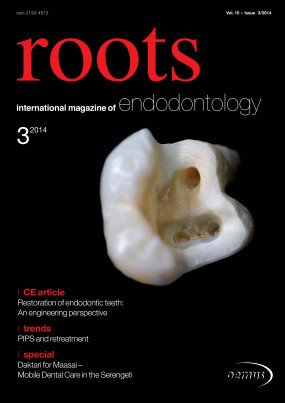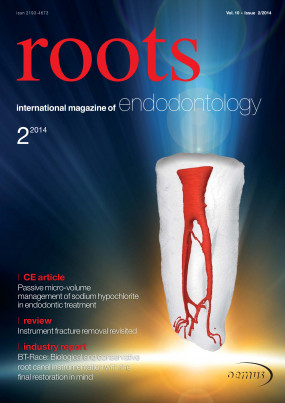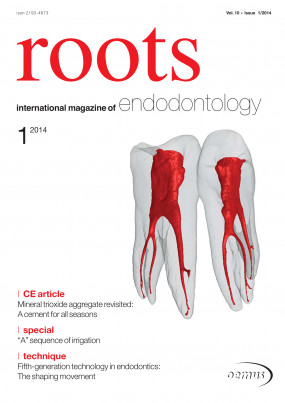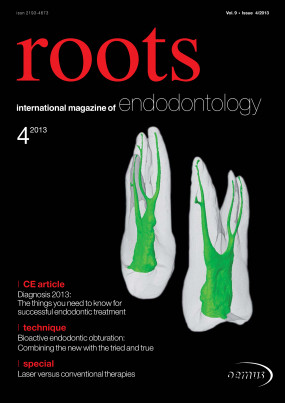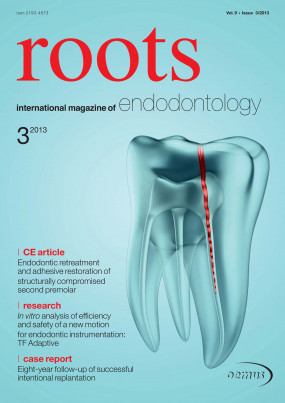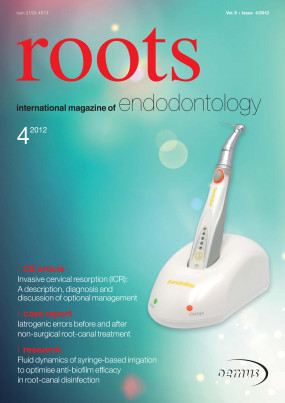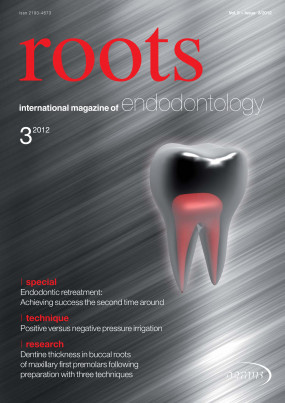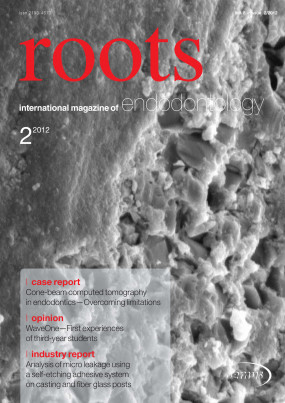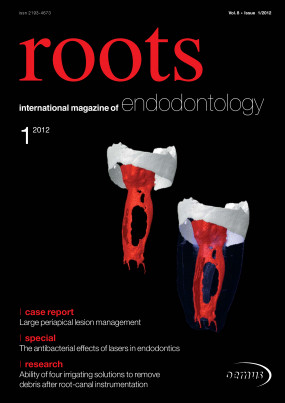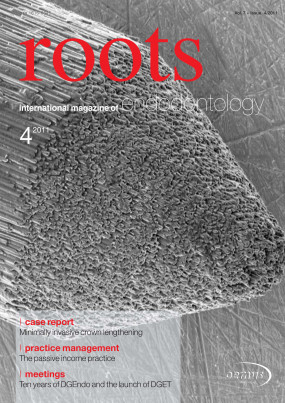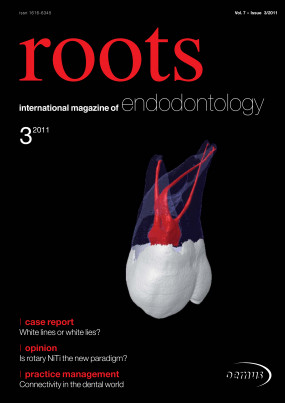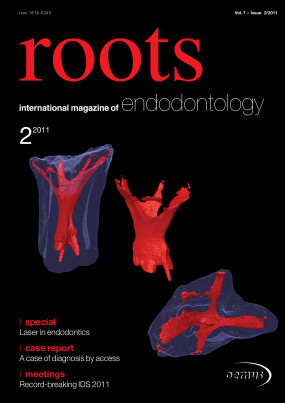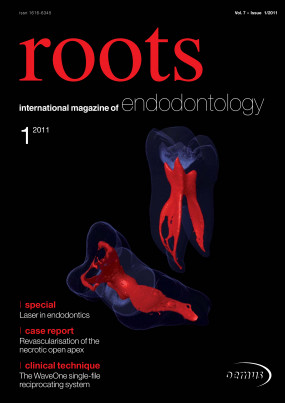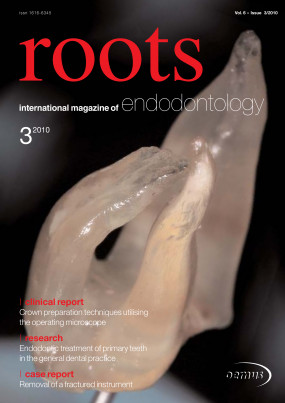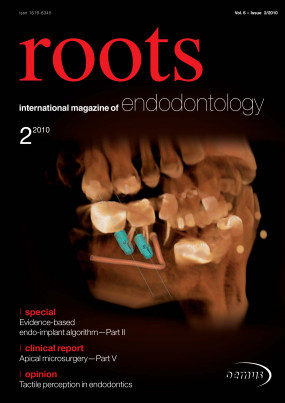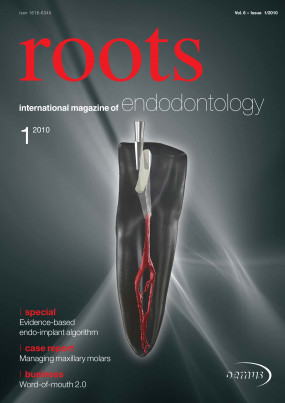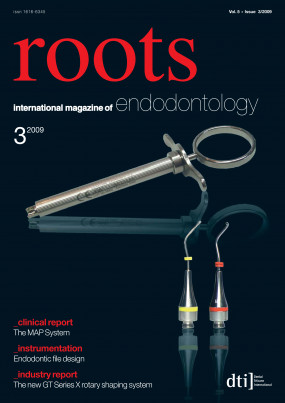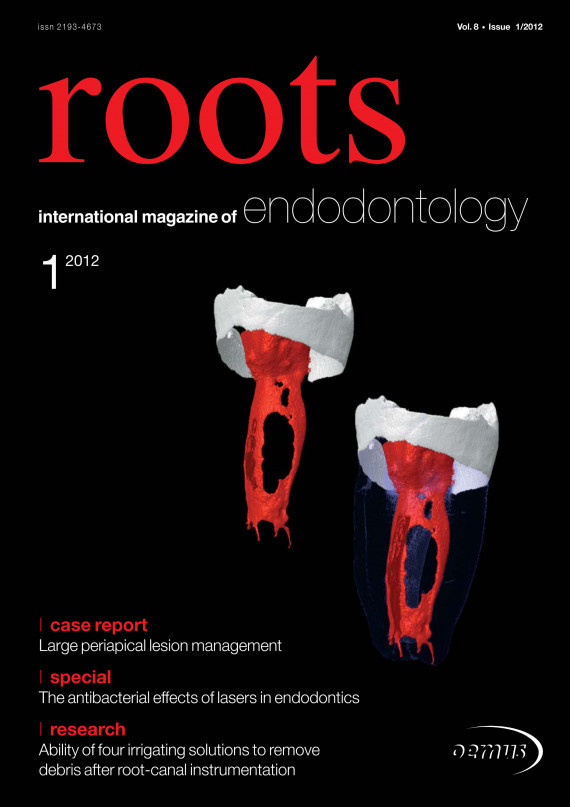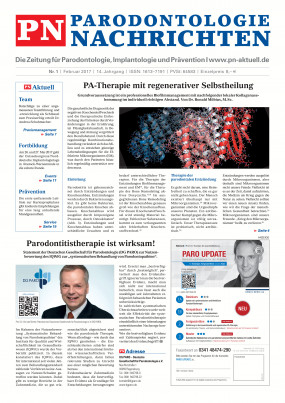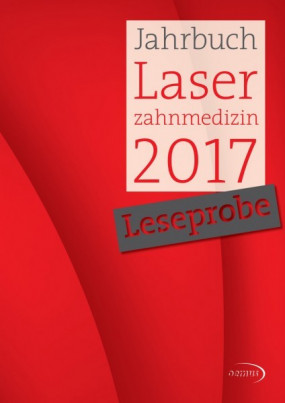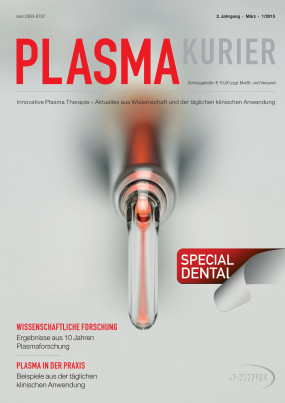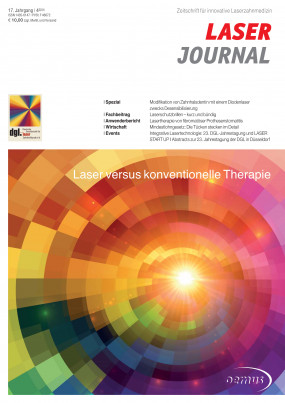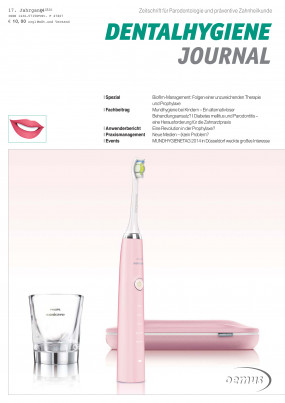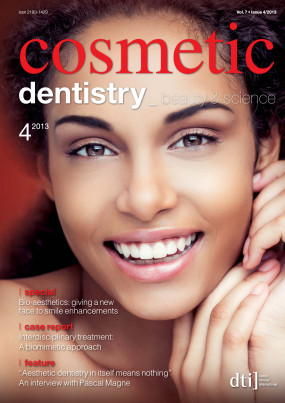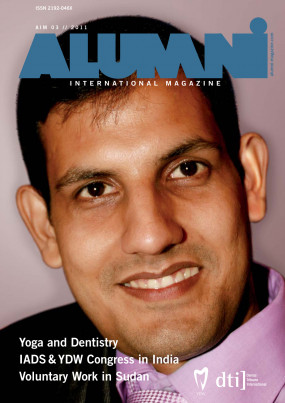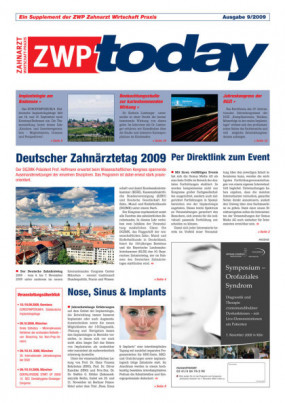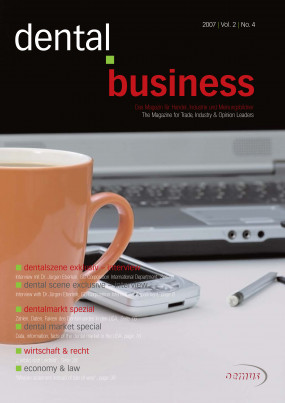Inhaltsverzeichnis
3
Ten years ago, in January 2002, the German Society of Endodontology (DGEndo) was founded. Full of enthusiasm, the 13 founding members pursued their goal of shaking up the endodontic world. In no time, a statute had been written, a home page and logo designed and the first annual meeting planned. Today, there are more than 1,000 registered members and the enthusiasm is still tangible. In light of this development, the German Society for Conservative Dentistry (DGZ) and the DGEndo decided to join forces and formed the German Society of Endodontology and Traumatology (DGET). The first annual meeting was held in Bonn last year—a great start for a successful merger.
6
Large periapical lesion management - Decompression combined with root-canal treatment
Dr Nuria Campo, Spain
Periapical lesions often develop slowly and do not become very large. Patients do not experience pain unless there is acute inflammatory exacerbation. These lesions are often diagnosed during routine radiographic exams. Some periapical lesions become large and, in cases of large radiolucencies, they may be diagnosed in the absence of any patient complaint. Sometimes, symptoms such as mild sensitivity, swelling, tooth mobility and displacement may be observed in these cases.
10
Intentional replantation: A viable treatment option for specific endodontic conditions
Prof Naseem Shah, Dr Ajay Logani & Dr Abhinav Kumar, India
Intentional replantation is defined as the purposeful extraction of a tooth in order to repair a defect or cause of treatment failure and thereafter the return of the tooth to its original socket.1 Any tooth that can be atraumatically removed in one piece is a potential candidate for intentional replantation. However, specific indications include:1–3 ...
14
Root-canal retreatment is a very common procedure that endodontists and general practitioners are faced with on almost a daily basis. The biggest challenge here is to re-establish the initial pathway of the canal and its original exit or apex. During the past decade, several techniques required that gutta-percha be used to fill the root canals. Sometimes and for many reasons, such as leakage or short preparation and/or obturation, the gutta-percha needs to be removed and the canal renegotiated...
16
Endodontic treatment can attain success rates of between 85 and 97%.1 Adequate treatment protocols, knowledge and infection control are essential to achieving such rates (Figs. 1a–d).2 It is well known that apical periodontitis is caused by the communication of root-canal micro-organisms and their by-products to the surrounding periodontal structures. Exposure of dental pulp directly to the oral cavity or via accessory canals, open dentinal tubules or periodontal pockets is the most probable route of the endodontic infection.2,3
22
26
Ability of four irrigating solutions to remove debris after root-canal instrumentationRoot-canal preparationIrrigationSEM examinationStatistical analysis
Dr Jorge Paredes-Vieyra, Dr Francisco Javier Jiménez Enríquez & Dr Carlos Cuevas Lasso, USA & Mexico
The cleaning and shaping of the root-canal system are considered key requirements for a successful root-canal treatment (RCT). However, limitations in the overall quality of preparations obtained by manual and automated root-canal instrumentation have been reported by numerous researchers.1,2 Many studies have concluded that neither hand instrumentation nor rotary preparation sufficiently clean the root canal, especially the apical region of curved canals...
30
Persistent apical periodontitis (AP) refers to AP that is associated with a tooth that has had root-canal therapy (RCT). As with primary AP, bacteria are the most common cause of the inflammatory response.1 Previously, a large body of evidence indicated that persistent infections are commonly composed of a single species; however, recent evidence points to the presence of a mixed biofilm.2,3 There are also non-microbial causes of AP, including foreign-body reactions, cystic formation, endogenous cholesterol crystals and scar formation. These will be discussed later...
34
Unveiled at the Chicago Dental Society’s 2012 Midwinter Meeting, the new A-dec LED dental ope-ratory light is now available to doctors around the world. “Designed for optimal visual acuity and treatment-room ergonomics, the A-dec LED is an outstanding solution that outperforms all other industry options,” says A-dec Product Manager Tom McCleskey. “By evolving LED technology, we’ve established a new benchmark for operatory lighting.”
35
Regardless of the endodontic instrumentation system used, initial exploration of the canal system has historically been accomplished by using stainless-steel, pre-curved hand instruments (files or reamers). Along with careful examination of radiographs and/ or CBCT scans, this initial phase identifies possible difficulties and obstructions within the canal system that the clinician may encounter in preparation for use of rotary NiTi instruments, which will further shape the canal.
36
Dr Ramachandran Nair had the honour of opening the conference. As one of the founding members, he touched on the history of the Swiss Society for Endodontology (SSE). A group of seven enthusiastic scientists and practitioners evolved into a well-organised society with over 300 members dedicated to the further development of the SSE. After his speech, Dr Nair was awarded with the society’s Guldener Prize. This award honours the late Dr Peter H.A. Guldener, who had been the spokesperson of endodontics in Switzerland for the last 30 years. He was also an eminent endodontic practitioner, educator, motivating force, founding member and the first SSE President...
